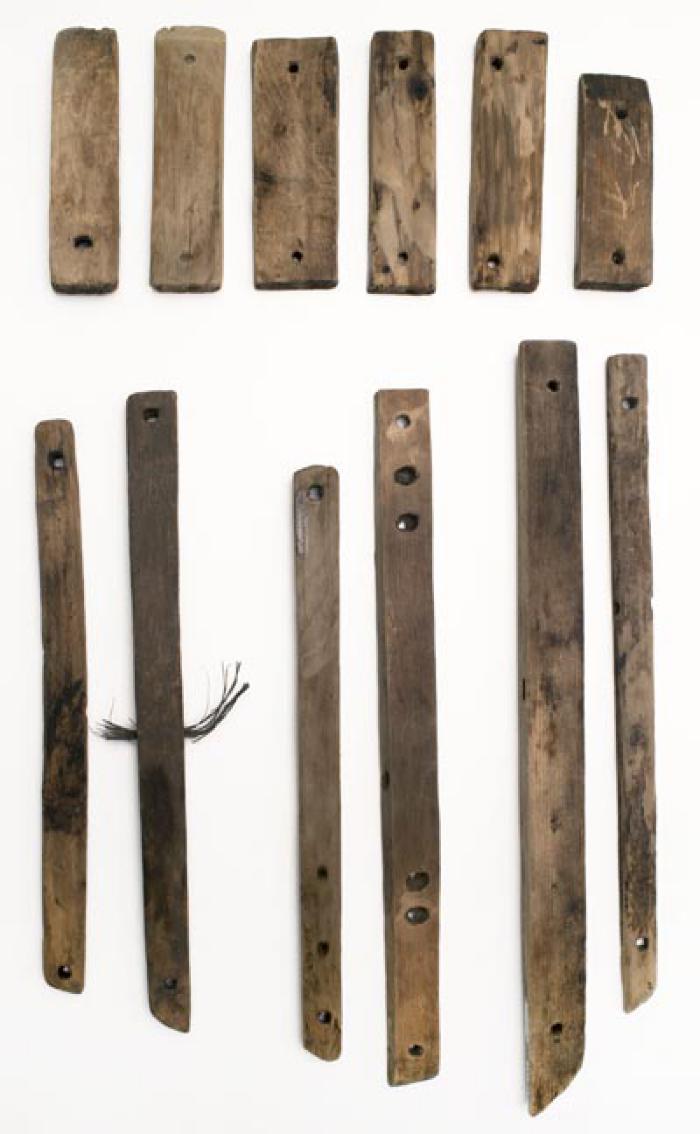Armor — Qatgat
Anguyatsuutet aturtaakait qatgat. – Our warriors always use armor.
00:00
00:00

Photo: Wooden slats from an armor vest, arranged as they would be assembled. Karluk One Site, ca. 400 years old, Koniag, Inc. Collection.
In addition to clubs, hatchets, spears, bows, and arrow-filled quivers, Alutiiq warriors created protective gear for battle. This included armor vests. Made from narrow slats of wood or whalebone tied together with sinew, these garments covered the torso, leaving the arms and legs free to move. Each vest had two panels of vertically aligned wooden slats. At the top of each panel, a row of small slats covered the chest. Below those, a second row of longer slats covered the stomach and the groin. Shoulder straps secured the front and the back panels together, and a tie on one side of the waist helped to fasten the garment to its wearer. These vests could be rolled up for storage and were flexible enough to be worn in boats, protecting men on the water.
Over the front of their vest, warriors sometimes attached a breastplate. They made this extra layer of protection by lashing narrow rods of wood together. A collar of tightly woven sinew provided protection for the neck, and warriors wore hats of wood or thick animal skin.
In addition to protective vests, Alutiiq warriors carried shields and shield walls in combat. Historic accounts describe large groups of men advancing with a wooden shield wall, a set of heavy, connected, wooden planks that could stop a musket ball. These portable walls were large. Russian observers note that they could shield thirty to forty men each and were made of three layers of cedar boards tied together with kelp and sinew.
Over the front of their vest, warriors sometimes attached a breastplate. They made this extra layer of protection by lashing narrow rods of wood together. A collar of tightly woven sinew provided protection for the neck, and warriors wore hats of wood or thick animal skin.
In addition to protective vests, Alutiiq warriors carried shields and shield walls in combat. Historic accounts describe large groups of men advancing with a wooden shield wall, a set of heavy, connected, wooden planks that could stop a musket ball. These portable walls were large. Russian observers note that they could shield thirty to forty men each and were made of three layers of cedar boards tied together with kelp and sinew.
